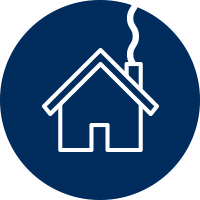
EPSE 565I / 390C
Assignment #1:
What does Inclusion Mean to You?
The first task of EPSE 565 brought me full circle back to where I started in the MET program. The first requirement for my first course was to write our personal learning theory, and the first in my final course was to write our personalized definition of inclusion. To me, the two go hand-in-hand.
Inclusion promotes learning, and learning does not happen without inclusion. Children learn from each other, and when children are able to work and play in a diverse environment, their potential is optimized.
The above Adobe page presents my philosophy of inclusion, a rubric to be used to evaluate my practice of inclusion on an ongoing basis, as well as considerations of what structures and practices need to be in place for a school to be considered 'inclusive'.
EPSE 565I and 390C were the ideal courses for me to take to finish my MET journey -- I was able to apply technology skills that I learned in the MET program to my learning of the UDL model, and the course helped me plan for September for when I step off the beach and into the classroom.
EPSE 565I examined the BC curriculum using a Universal Design For Learning model. Universal Design for Learning, or (UDL), is an inclusive framework for teaching to ensure that all learners have equal opportunity to learn with their peers.
UDL is a three block model, with the first block being Social Emotion Learning (SEL). The premiss of SEL in the UDL model, is that learning does not happen until the social-emotional needs are met for all learners. To meet the SEL needs of all learners, the classroom teacher guides students to discover their preferred learning style, and helps to address any physical and social needs.
The second block of the model examines the curriculum that each individual student needs to learn. UDL requires that educators provide:
-
multiple ways to engage learners to tap into their strengths, interests and passions to increase motivation to learn
-
multiple ways to represent learning so that learners have different means to acquire information
-
multiple ways of expression for learners to demonstrate what they have learned.
The third block examines systems in place at the school, district and provincial levels, to ensure teachers have the capacity to provide a UDL program to all students.
UDL made me think of my ideal class and management design, and question:
UDL Case Study
For the summative project, groups were formed to explore a case study, and to apply what we learned in the course by designing a UDL program.
My particular group examined a 'cluster' class of students with giftedness, and other various strengths and abilities. The task was to create a UDL program for all the needs in the class looking at the three tiers: SEL, curricular programming for all students, and a management plan for the class.
Creating the unit planner was an ambitious process, combining the big ideas, essential questions, and competencies of science, socials, numeracy and literacy of the BC curriculum. The unit mixed direct teaching with inquiry and other instructional strategies within a gradual release process.
Although ambitious, the process was helpful as I prepare to trade in my paddle for a white board marker.
References
About Universal Design for Learning. (2015, May 11). Retrieved July 24, 2017, from http://www.cast.org/our-work/about-
udl.html#.WXZWWCMrJsQ
Katz, J. (2012).Teaching to diversity: the three-block model of universal design for learning. Winnipeg, MB, Canada: Portage & Main Press.




